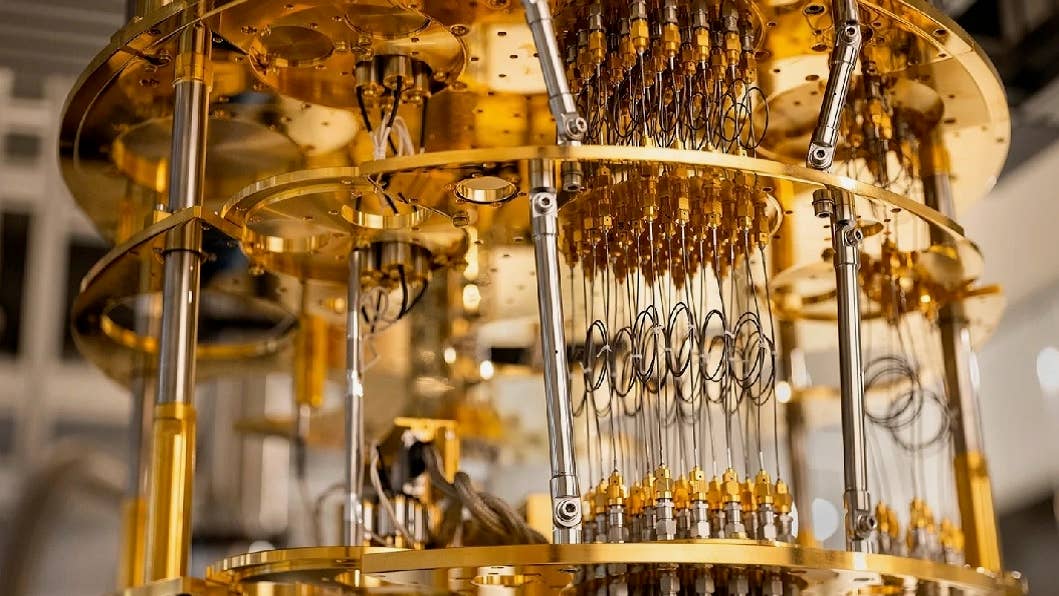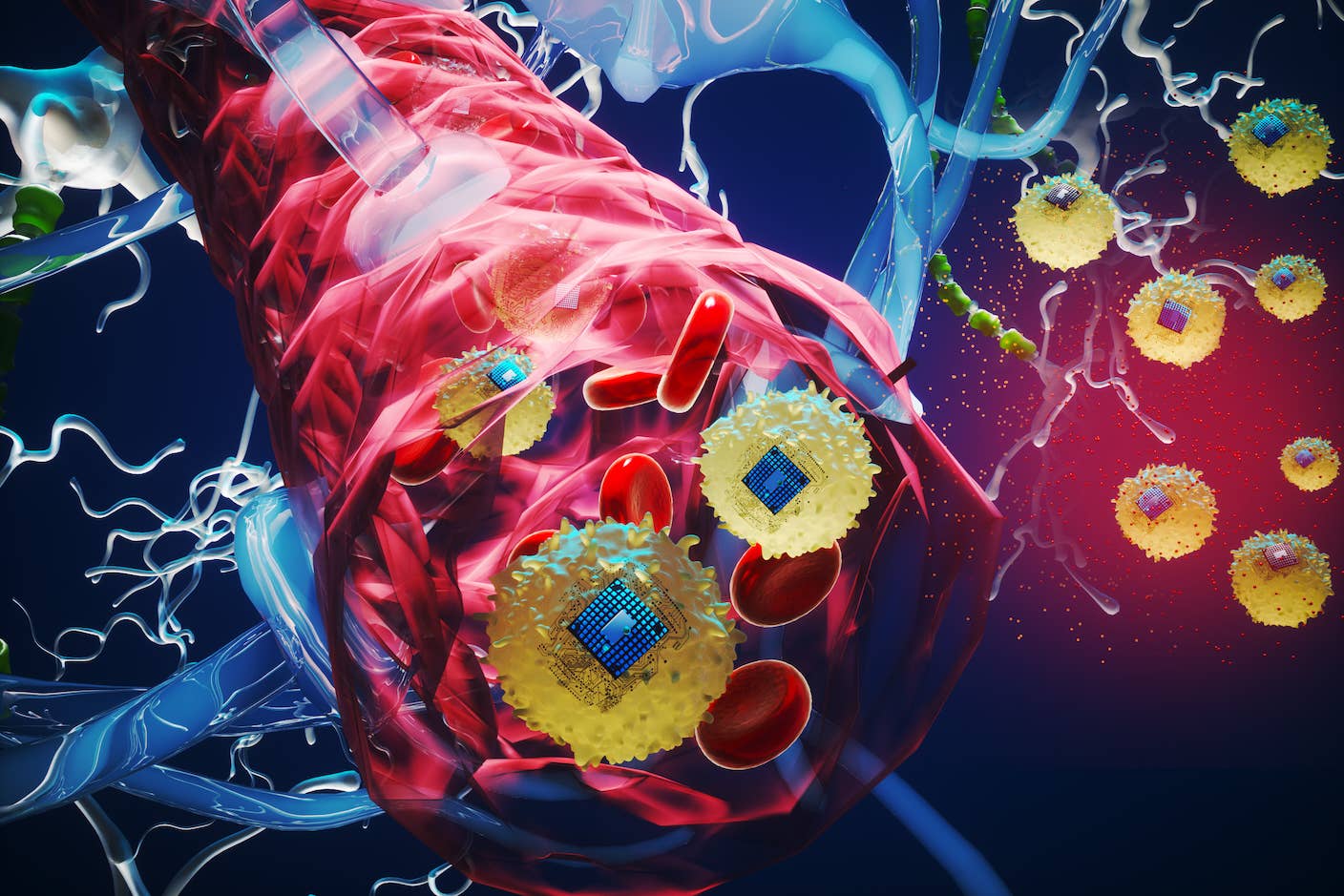Microsoft Wants to Build a Quantum Supercomputer Within a Decade

Share
Since the start of the quantum race, Microsoft has placed its bets on the elusive but potentially game-changing topological qubit. Now the company claims its Hail Mary has paid off, saying it could build a working processor in less than a decade.
Today’s leading quantum computing companies have predominantly focused on qubits—the quantum equivalent of bits—made out of superconducting electronics, trapped ions, or photons. These devices have achieved impressive milestones in recent years, but are hampered by errors that mean a quantum computer able to outperform classical ones still appears some way off.
Microsoft, on the other hand, has long championed topological quantum computing. Rather than encoding information in the states of individual particles, this approach encodes information in the overarching structure of the system. In theory, that should make the devices considerably more tolerant of background noise from the environment and therefore more or less error-proof.
To do so, though, you need to generate an exotic form of quasiparticle called a Majorana zero mode (MZM), which has proven incredibly difficult. A new paper from Microsoft researchers now claims to have achieved the feat, and has laid out a road map for using them to build a computer capable of performing one million quantum operations per second.
“It has been an arduous development path in the near term because it required that we make a physics breakthrough that has eluded researchers for decades,” Chetan Nayak from Microsoft wrote in a blog post. “Overcoming many challenges, we’re thrilled to share that a peer-reviewed paper...establishes that Microsoft has achieved the first milestone towards creating a reliable and practical quantum supercomputer.”
Microsoft’s approach to quantum computing builds on an obscure branch of mathematics known as topology. It is used to describe fundamental properties of an object’s shape that don’t change when it is deformed, twisted, or stretched.
The classic example is the fact that topologically, a doughnut and a coffee mug are the same shape because they each have a solitary hole—in the center of the doughnut and the handle of the mug. Taking a bite of the doughnut or chipping the mug don’t change the overarching shape, but cutting the doughnut in half or snapping off the handle would.
The insight for quantum computing is that if you could store information in the topological state of a system, it would be similarly resistant to minor perturbations. That could make it largely immune to the kind of environmental noise that frequently interferes with the fragile quantum states of today’s leading qubit technologies.
Early research identified MZMs—unusual conglomerations of electrons that behave as a single particle—as a promising candidate to create “topological qubits.” In theory, the paths of multiple MZMs can be interwoven to create a topological structure capable of carrying out quantum computation. Each so-called “braid” between a pair of MZMs effectively acts as a logic gate.
But creating these topological qubits has proven incredibly tough. Not only is it tricky to build hardware capable of producing MZMs, it’s very difficult to distinguish them from a variety of similar quantum states that are of no use for building quantum computers. Microsoft actually announced they had detected MZMs in nanowires connected to a superconductor in 2018, but the results had to be retracted in 2021 after other groups couldn’t replicate them.
Be Part of the Future
Sign up to receive top stories about groundbreaking technologies and visionary thinkers from SingularityHub.


Now though, the company claims they have proven that they can generate MZMs in similar devices. Microsoft released preliminary results last year, but now the research has been published in the peer-reviewed journal Physical Review B. While the previous retracted study relied on detecting a sudden peak in the wire’s electrical conductance, this time around they used a more rigorous protocol that looked for signatures of MZMs at both ends of the wire.
Nayak told New Scientist that the probability of any device that passed this new test not actually exhibiting an MZM was less than eight percent. Other researchers were less convinced, with several telling New Scientist that the new test still had flaws and that some details in the data suggest the results could be the consequence of other quantum effects.
Nonetheless, Microsoft says the result ticks off the first step in its six-point roadmap to creating a topological quantum supercomputer. Now the company has generated MZMs, the next step is to use them to create topological qubits before stringing many of them together.
While that might seem like a long road, Krysta Svore from Microsoft told Tech Crunch they envision being able to build a full-scale quantum computer capable of one million quantum operations per second within a decade.
But Microsoft isn’t the only one making progress on this front. MZMs fall into a class of quasiparticles called non-Abelian anyons, and they aren’t the only ones that can be used to create a topological quantum computer. In May, both Google and Quantinuum claimed to have shown that their hardware can also generate these anyons.
It remains unclear whether this represents the beginning of a major shift in the quantum computing landscape towards topological approaches. But it is growing evidence that Microsoft’s early gamble on the technology could be about to pay off.
Image Credit: Microsoft Azure
Related Articles

How Scientists Are Growing Computers From Human Brain Cells—and Why They Want to Keep Doing It

These Brain Implants Are Smaller Than Cells and Can Be Injected Into Veins

This Wireless Brain Implant Is Smaller Than a Grain of Salt
What we’re reading
